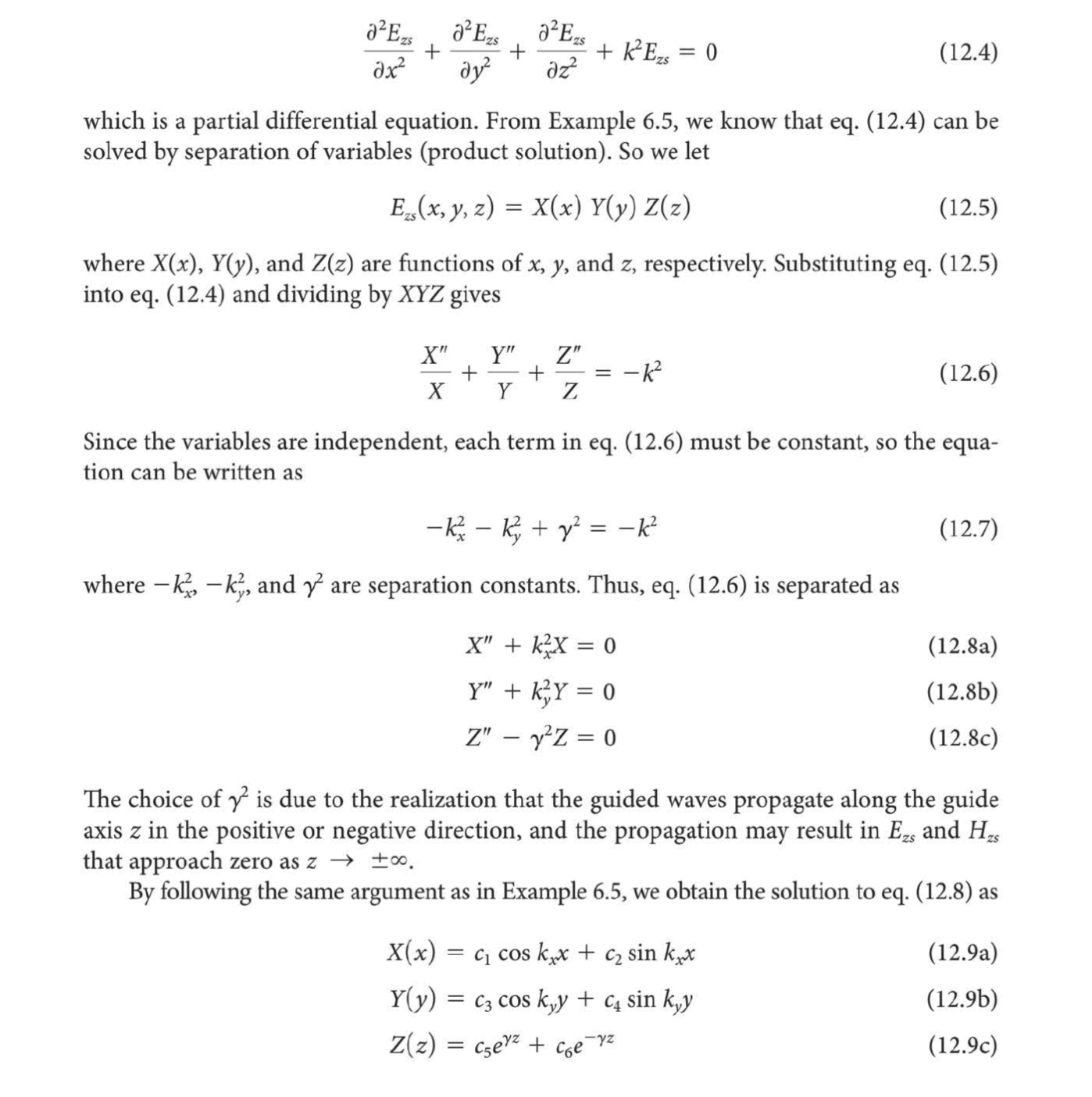I have the following wave equation that I need help to solve via separation of variables: $$\nabla^2 \mathbf{E} + k^2 \mathbf{E} = 0$$ Where E is the electric field and k is the wave number
Using separation of variables for each component:
$$ E_i(x,y,z) = f(x)g(y)h(z) \text{ , where i = x , y , z} $$
For a single component:
$$(f_{xx})(g)(h) + (f)(g_{yy})(h) + (h_{zz}) + k^2(fgh) = 0 $$
or $$f_{xx}/f + g_{yy}/g + h_{zz}/h + k^2 = 0 $$
My physics reader skips a bunch of steps and writes it as 3 separate equations:
$$f_{xx}/f = -k_x $$ $$g_{yy}/g = -k_y $$ $$h_{zz}/h = -k_z $$
and defines the wave number vector k. I think we assume a complex solution since we get a final result of: $$ E = e^{ - \mathbf{k} \circ \mathbf {r} } $$
My engineering reader writes the same equations as:
$$f_{xx}/f = -k_x $$ $$g_{yy}/g = -k_y $$ $$h_{zz}/h = \gamma $$
where gamma is the propagation constant and gives the following equation
$$ -k_x - k^y + \gamma^2 = - k^2$$
Question 1: why can the propagation constant (a complex number) have a different sign? For I thought: $$ -k^2 = - || \mathbf{k} ||^2 = -(k_x^2 + k_y^2 + \gamma^2) $$
What in the mathematics is going on?
Question 2: Why is the wave equation not written/solved using the following form
$$\nabla^2 \mathbf{E} + k_c^2 \mathbf{E} = 0$$
if other source state $$ k_{cut}^2 = \gamma^2 + k^2 $$ where gamma is the propagation constant, k is the wavenumber and kc is the cut off wave number?
For the record, they simplified it to and then skipped to the final result, leaving me out of the derivation
$$\nabla^2 \mathbf{E} + (\gamma^2 + k^2)^2 \mathbf{E} = 0$$
I do not get the 'correct' answer, which is:
$$ H_x = \frac{-1}{K_c^2}( \gamma \frac{d}{dx} H_z + j \omega \epsilon \frac{d}{dy} E_z)$$
Question 3: when do we use:
$$\nabla^2 \mathbf{E} + k^2 \mathbf{E} = 0$$
versus
$$\nabla^2 \mathbf{E} + \gamma^2 \mathbf{E} = 0$$
Notation:
$$\gamma = \alpha + j \beta $$
$$ k = - j \alpha + \beta $$
- alpha is the attenuation constant
- beta is the phase constant / "propagation wave number"
Edits As requested. The book is elements of electromagnetism

